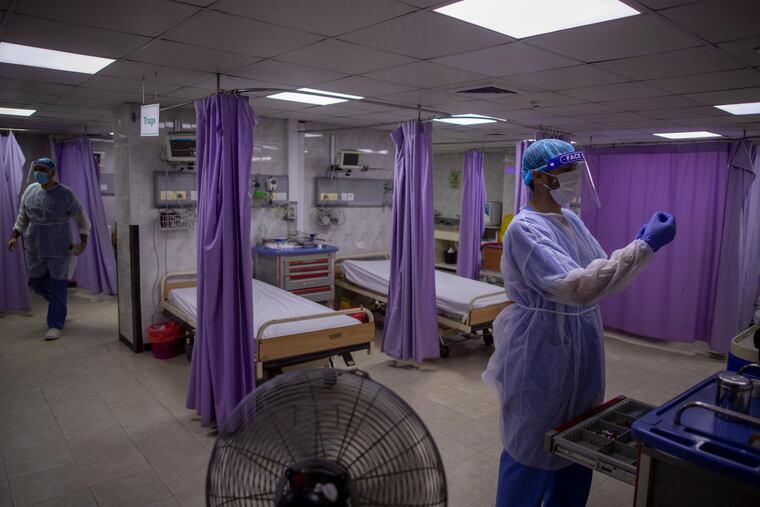Black patients twice as likely as whites to die of treatable health conditions, study finds
“There’s no doubt the pandemic has exacerbated these weaknesses in our health-care system,” David Blumenthal, president of the Commonwealth Fund, said Thursday.

Black patients in Pennsylvania are more than twice as likely to die prematurely of treatable health conditions, such as diabetes and heart disease, when compared with white patients, according to a new report.
Pennsylvania reported a mortality rate due to treatable conditions among Black individuals of 162.1 deaths per 100,000 people — more than twice the 74.2 deaths per 100,000 people among white individuals in 2016 and 2017, according to a new report by the Commonwealth Fund. Hispanic individuals in Pennsylvania had an even lower death rate of 70.8 per 100,000.
The findings are in line with a national trend of racial disparities in health care that analysts fear is worsening due to COVID-19.
“There’s no doubt the pandemic has exacerbated these weaknesses in our health-care system,” David Blumenthal, president of the Commonwealth Fund, said in a call with reporters Thursday.
The Commonwealth Fund’s annual state health scorecard found a decline in life expectancy, in part due to widening race disparities and a rise in so-called deaths of despair — those related to drugs, suicide and alcohol. Among the report’s findings:
In New Jersey, Black patients died prematurely (before age 75) of treatable conditions at a rate of 141.5 per 100,000 people, compared with a rate of 67.2 per 100,00 people among white patients and 54.6 per 100,000 people among Hispanic patients.
Pennsylvania ranked among the worst states for drug overdose deaths, with a rate of 36.1 drug-related deaths per 100,000 people in 2018. Nationally, drug overdose deaths increased 105% between 2005 and 2018, largely due to opioids and a rise in fentanyl deaths in recent years.
New Jersey reported a rate of 33.1 drug-related deaths per 100,000 people in 2018, a sharp increase from its rate of 14 deaths per 100,000 people in 2014.
Rising rates of the uninsured and health-care costs could worsen people’s health and lead to even shorter life expectancy, according to the report.
In New Jersey, Hispanic adults under age 65 were five times as likely to be uninsured compared with white individuals in 2018. The uninsured rate among Black adults was twice that of white individuals.
In Pennsylvania, Hispanic adults under age 65 were almost three times as likely to be uninsured compared with white individuals.
In both states, Hispanic patients reported the greatest difficulty affording health care and were far more likely than white or Black patients to report going without care because of cost.
“The gains made in health insurance coverage since the Affordable Care Act have either stalled or eroded, and racial and ethnic inequities in coverage are at risk of getting worse during the pandemic,” Sara Collins, a coauthor of the study and vice president for health-care coverage and access at the Commonwealth Fund, said in a statement.
Collins said she hoped the report’s findings would draw attention to the need for systemic change in health care and encourage political leaders to take action.